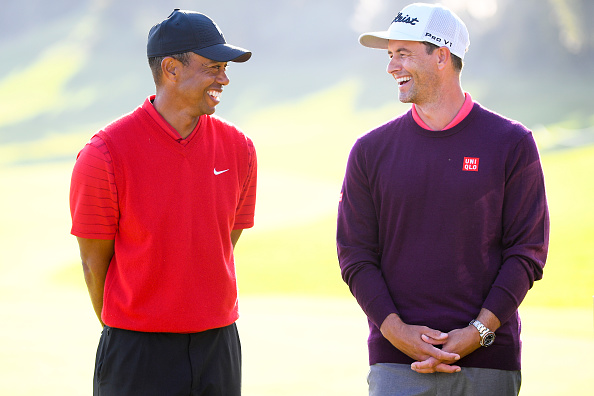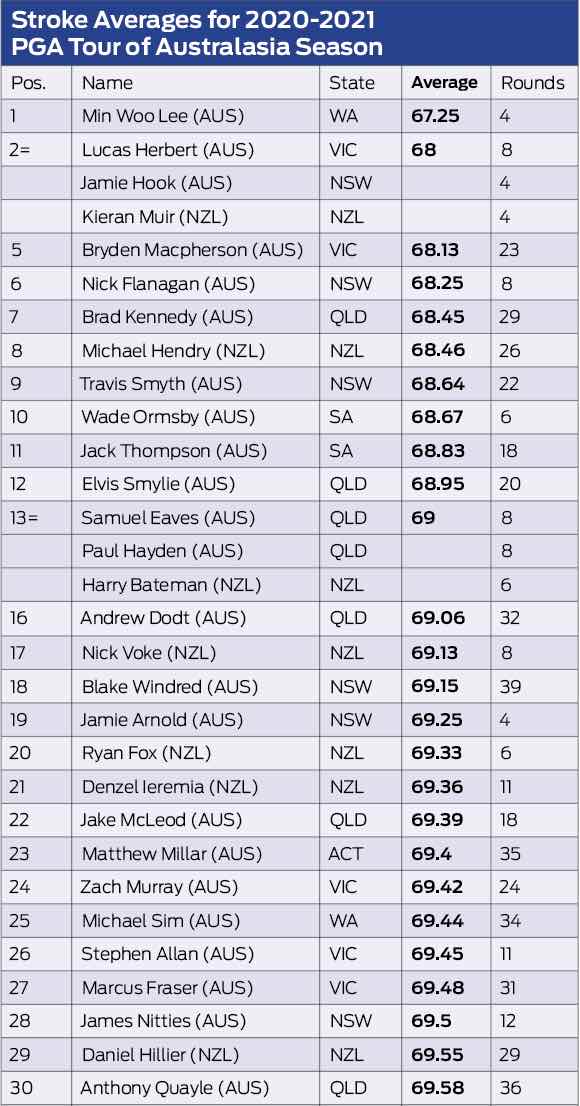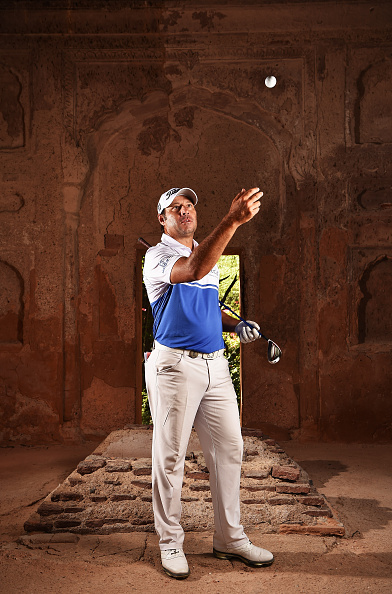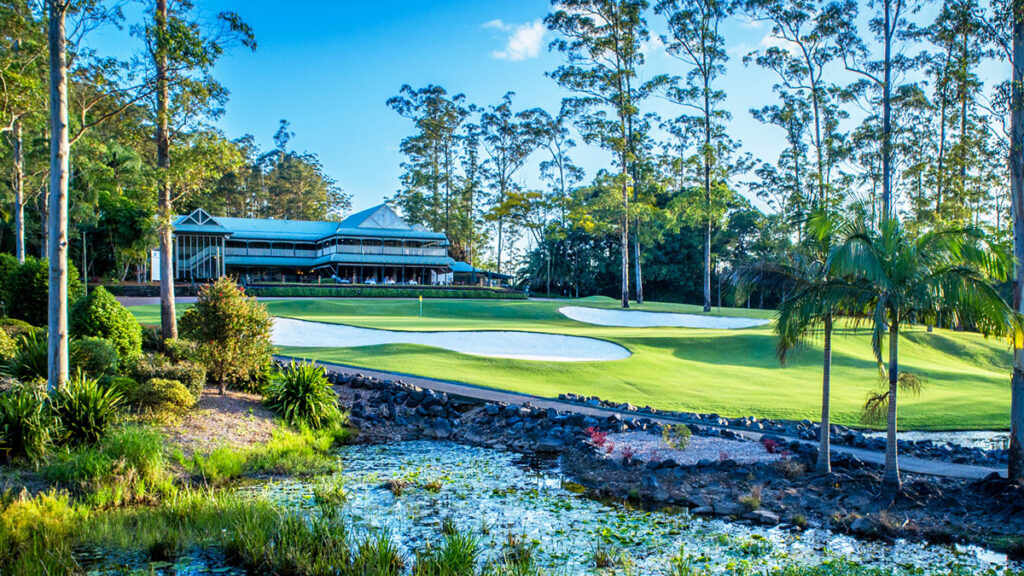Aussie star Adam Scott tells a great story about the time he copped a hiding so bad as a rookie, he seriously reconsidered his decision to turn professional.
Scott had just decided to make the jump into the paid ranks and was making his mark in Europe when he returned to Las Vegas for a session with his coach at the time, Butch Harmon. Harmon’s star student Tiger Woods was also in town, getting a last-minute check-up before the US Open. With prodding from Harmon, Woods and Scott went out for an 18-hole match.
“I was nervous, of course. We went out and had a match, and I think I was maybe 1 down through the turn at Rio Secco [Golf Club],” Scott recalls, “and then Tiger stepped it up and went birdie, birdie, birdie and eagles and stuff.
“He closed me out on the 14th hole, but he double-bogeyed the ninth for 63, and I was a bit blown away by what I saw. I thought I played quite well… probably shot about even-par, and I was nine off the pace.”
Scott was so demoralised he told Butch, “Maybe the pro tour isn’t for me?”
Fortunately for Scott, there was a saving grace: the proceedings at Pebble Beach.
“The only thing that made me feel good was he won the US Open by 15 the next week, so I was quite happy to see that no one else really played like that.”

No such redemption exists for Australia’s next generation of Adam Scotts. They needn’t face Tiger Woods to get handed a flogging of biblical proportions and they certainly don’t have to leave our shores for the pleasure, either.
If the recent PGA Tour of Australasia season taught us anything, it’s that there may never have been a more challenging time to make that leap of faith into the pro ranks. Not because of COVID-19 (although the coronavirus pandemic has postponed the immediate futures of so many aspiring tour players). Not because inflation and soaring living expenses are crippling young bank accounts.
The problem is how damn talented today’s crop of Aussie professionals are. It’s bordering on comedy, the sort of scores you need to shoot to be anywhere near competitive. Case in point: Aussie Terry Pilkadaris [right]. The 20-year tour veteran has played all around the world including two Open Championships and a US Open. He partnered Woods at the 1996 Australian Open and saw first-hand, like Scott would a few years later, how Tiger’s best golf was simply in a different stratosphere to other mere mortals teeing it up.
This year, similar nightmares were triggered on the local scene. Pilkadaris chalked up 31 rounds of tournament play and an cumulative 57-under-par for his efforts. His stroke average during this time was 69.87, with a lowest round of 64 at the new Players Series’ event at Rosebud. His highest score? A 74 at the Victorian PGA Championship, one of just five rounds that he shot over par.

Where did this incredible consistency see him finish in the Order of Merit race? Way back in 52nd position, earning him $18,187 for his troubles.
To put this in some sort of context, only six players on the PGA Tour (at the time of writing) had a lower raw scoring average – Bryson DeChambeau, Justin Thomas, Dustin Johnson, Joaquin Niemann, Russell Henley and Webb Simpson. None of those guys had earned less than $2.1 million ($US1.6m) from a dozen or so events. Not to say poor old ‘Pilks’ is on the same level as Bryson or DJ, or the depth of fields in the US are remotely comparable, but when it comes down to the nitty gritty of getting that little white ball in the hole, you have to be shooting well below Pilkadaris’ 69.87 if you want to make a genuine living in this part of the world.
“The level of competition is crazy good,” Pilkadaris says. “If you want to play on tour, this is what you’re up against now – missing cuts after you’ve shot four-under, like I did in this year’s Vic Open.
“I’ve had a few young guys come up to me and say they’re going to try their luck at tour school and I’m like, Do you really think you’re ready? Most of them are in for a reality check.”
Not surprisingly, Pilkadaris has shifted his focus to teaching at Melbourne’s Keysborough Golf Club. Not only has it helped him pay the bills, it has given him a better understanding as to why today’s young pros are better than ever.
“The technology available to both coaches and students has made the process of getting great more efficient,” Pilkadaris says. “That instant feedback, whether its via video or computer, has made the elite side of the game so much more competitive and that’s now translating to the tour.
“Back in my day, if the cut after day one was, say, one-over, the general rule was it would blow out to two or three-over by the end of day two. Today, that cut number doesn’t blow out, it actually comes in to even-par or one-under. One basic error during your first two rounds is now all it takes to send you packing for the weekend.”
What does this mean for those plucky plus-markers who think their sub-scratch statuses could potentially pay off their mortgages?
“My advice is to forget your impressive handicap,” Pilkadaris says. “Crunch the numbers on what you’re actually shooting. Total up all your rounds over the past year and work out what your stroke average is, per round. I played pretty solid golf this year to average 69.87 and look where that got me. If you’re not shooting considerably lower than that in competition rounds, you’re better off enjoying being a plus-marker because this is how good the guys on tour are now. This current crop is dynamite!”

PGA of Australia boss Gavin Kirkman agrees the depth of talent on show in Australia is unchartered but says the real winners will be golf fans.
“Australia boasts 10 per cent of the world’s top-50 men’s players, plus two of the world’s top-20 women, which is an almighty achievement for our small island nation,” Kirkman says.
“We truly believe that our next crop of future male and female talent emerging through the ranks is capable of elevating our position as one of the strongest breeding grounds in the world of golf. There’s no doubt it promises to be one of the most exciting periods in Australian golf history.”




